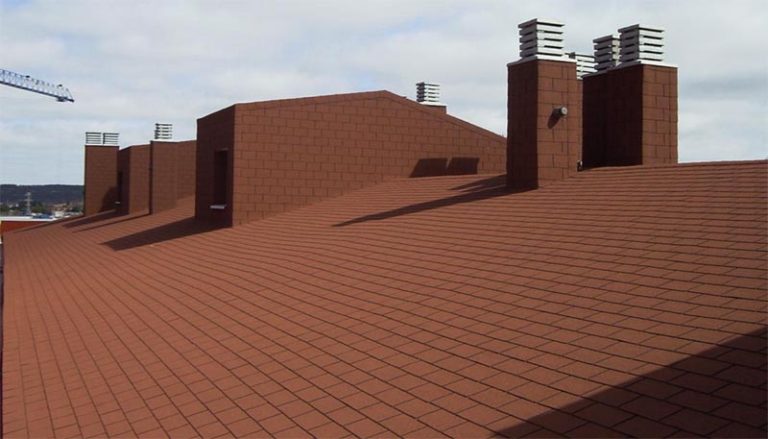
Next we will talk about the American tegola as an alternative to other construction materials.
As usual, when we have doubts about a product, the starting point should be to turn to companies with long experience and recognized prestige.
In construction materials related to energy efficiency, insulation and comfort in buildings, ChovA will position itself as a benchmark company.
After a century dedicated to the manufacture and sale of waterproofing, thermal insulation and acoustic insulation systems, ChovA is positioned as one of the main companies in the sector both nationally and internationally.
One of the products that are part of its portfolio is the asphalt tegola and we will talk about it as an alternative to other construction elements.
Table of Contents
What is the American Tegola
Its name comes from its widespread use in the American continent. The American tegola or asphalt tegola, is a product made of bituminous materials and coated with resins and mineral granules, with an enormous waterproofing capacity.
It is a substitute for the traditional tile, not only to waterproof sheds and pergolas, but also the roofs of buildings, giving it an appearance very similar to slate but at a lower cost.
The only requirement to use this product is that the roof has a slope greater than 15%, thus guaranteeing the total evacuation of the water from the rain, avoiding possible leaks.
The wide range of existing colors provides great decorative possibilities, while providing a unique personality to each building.
Qualities and advantages of the American tegola
There are many advantages it provides compared to other more traditional materials. Here are some of them:
Enormous ease of installation, except because it is work at heights. It is a cheaper alternative than others. The only requirement is that the slope of the roof is not less than 15%. Provides less load to the building structure, with an approximate weight of 11 kg per square meter. It has great resistance to weather agents such as hail, snowfall, storms, etc. It has an enormous waterproofing capacity. It is suitable for installation on various supports such as wood, mortar or concrete. Provides style and design.
Layers and materials that make up the American tegola.
Installation of the American tegola
Its installation is so simple that an advanced DIY enthusiast could carry out the waterproofing of the roof of his own single-family home. Of course, as long as it has all the necessary security measures, such as a lifeline.
Previous considerations
The installation of the American tegola is carried out using mechanical fixings, that is, with wide-headed spikes (minimum 9 mm in diameter) made of stainless steel or galvanized.
The support must be smooth, homogeneous, stable and resistant to nailing.
For slopes between 15% and 25%, the bilayer solution is recommended. For slopes greater than 25%, the monolayer solution.
Installation
It will start at the lowest part of the slope, laying the starting row, trimming the skirts and adjusting it to the edge of the eaves.
The next row will begin once half of the right skirt of the first plate has been cut. We installed it and continued putting whole plates until finishing the second row.
Once the first three rows have been installed, we will apply heat to the plates using a blowtorch so that, in this way, they cohere and adhere, reaching their full waterproofing effectiveness.
In the same way, continue with the installation until the cover is complete.
For more information, you can consult the technical sheet of the American tegola.
As I indicated at the beginning of this article, at ChovA they are not only specialists in waterproofing systems, but they are also specialists in acoustic and thermal insulation systems.
Proof of this is its SATE insulation product, a thermal insulation system from the outside. Which, broadly speaking, consists of extruded polystyrene foam (XPS) thermal insulation boards.
This material can be fixed chemically by adhesive, mechanically, or in a mixed way. And later it is covered and protected with a layer of mortar.
The exterior insulation lies, among others, in the fact that in this way thermal bridges are eliminated that are unavoidable if the installation were carried out from the inside.
.